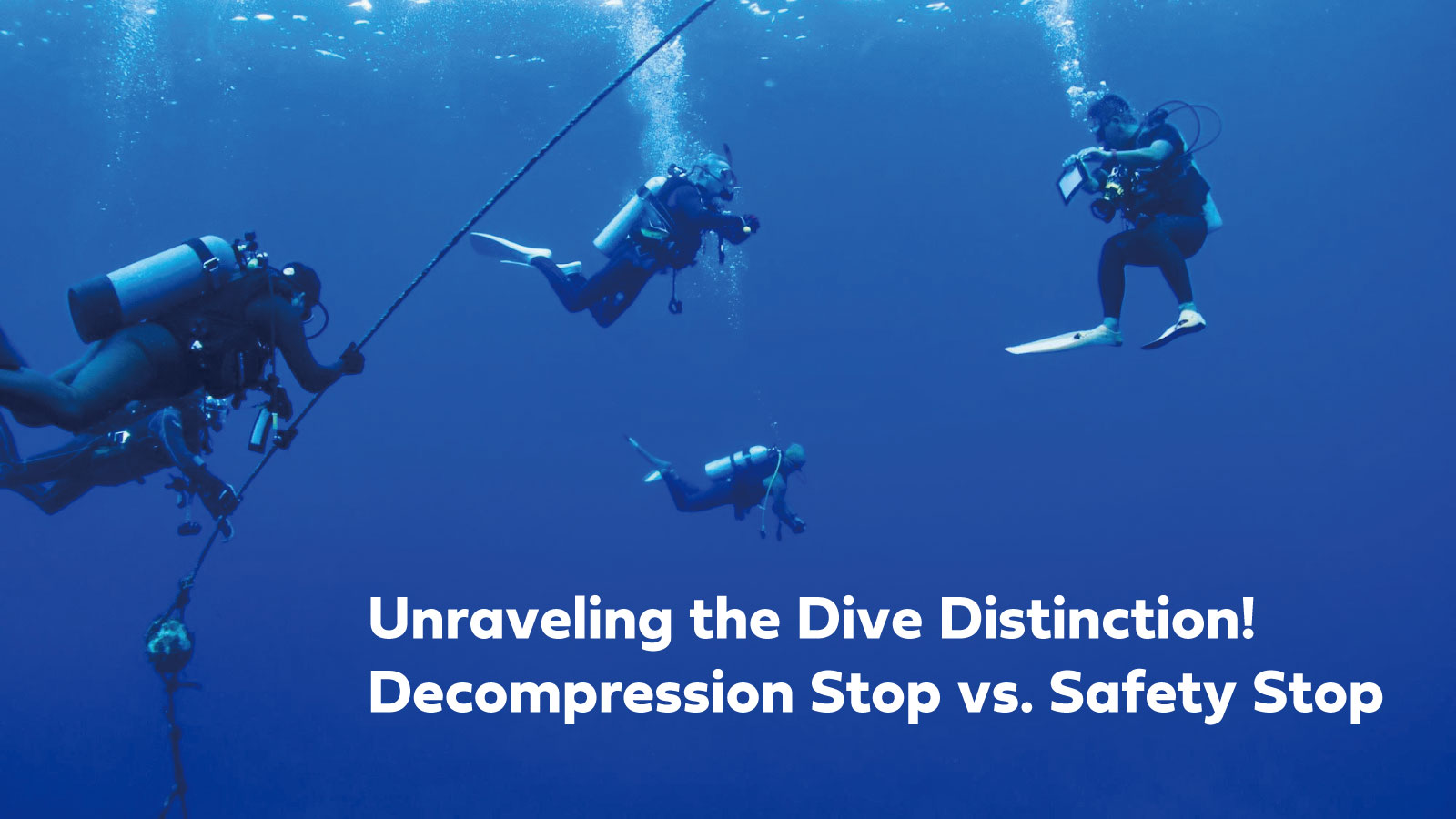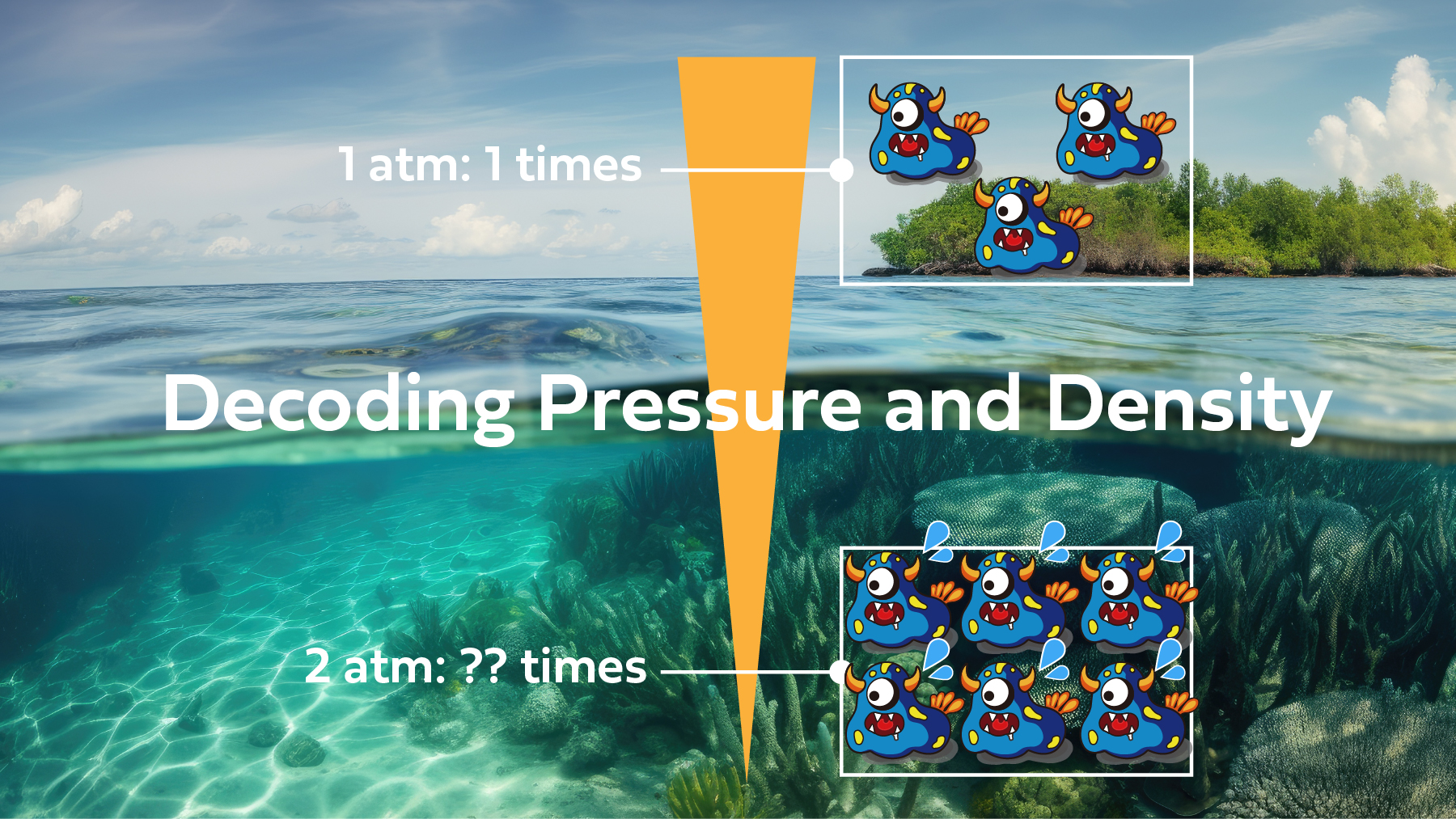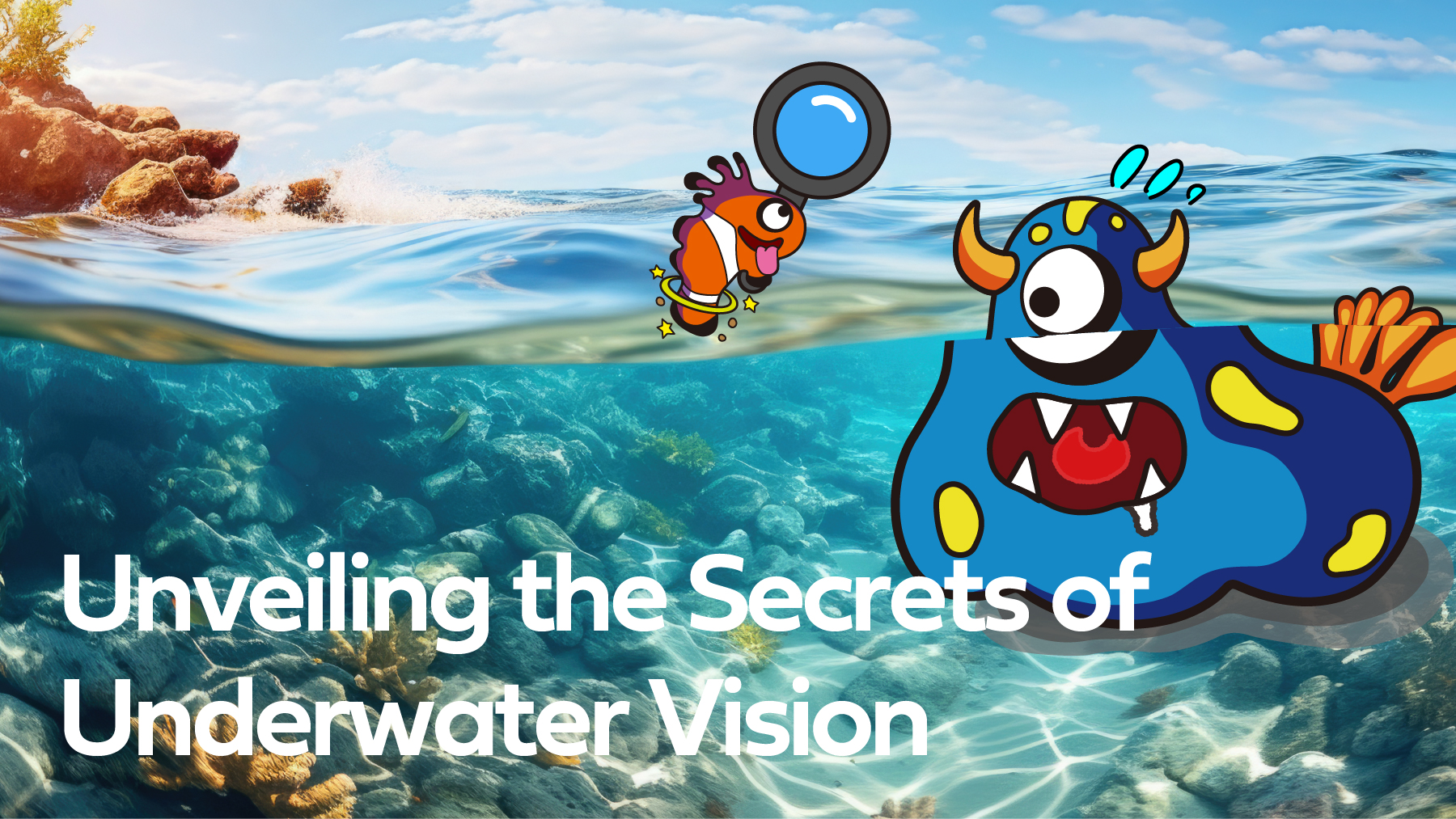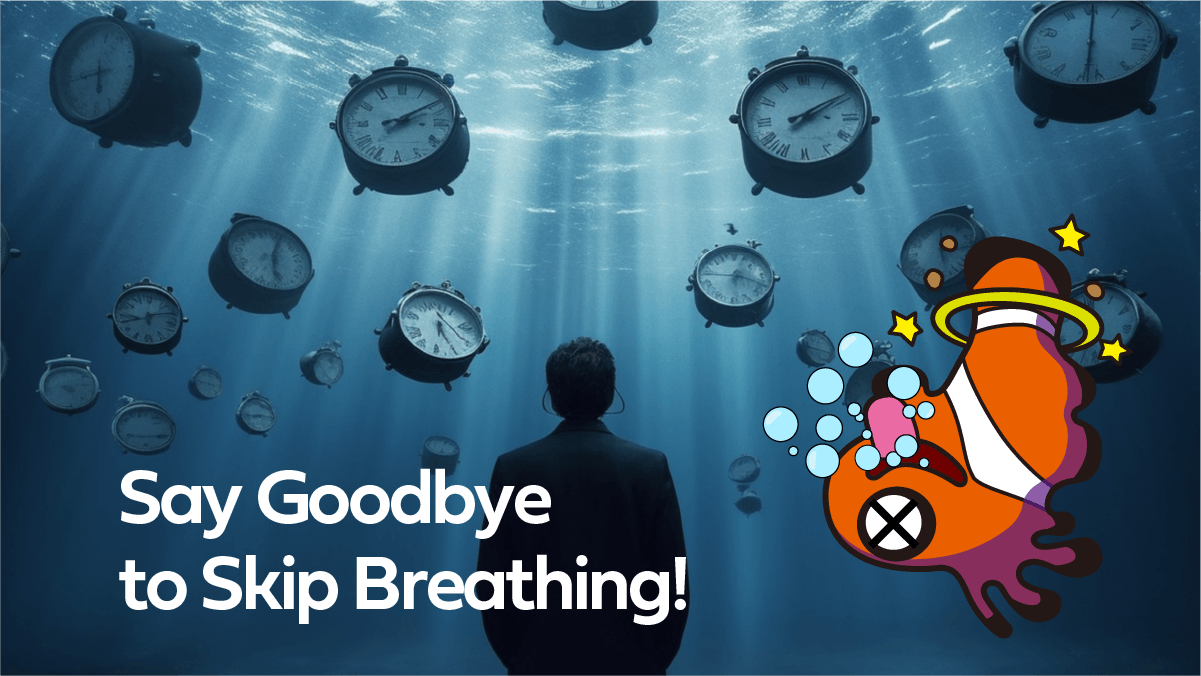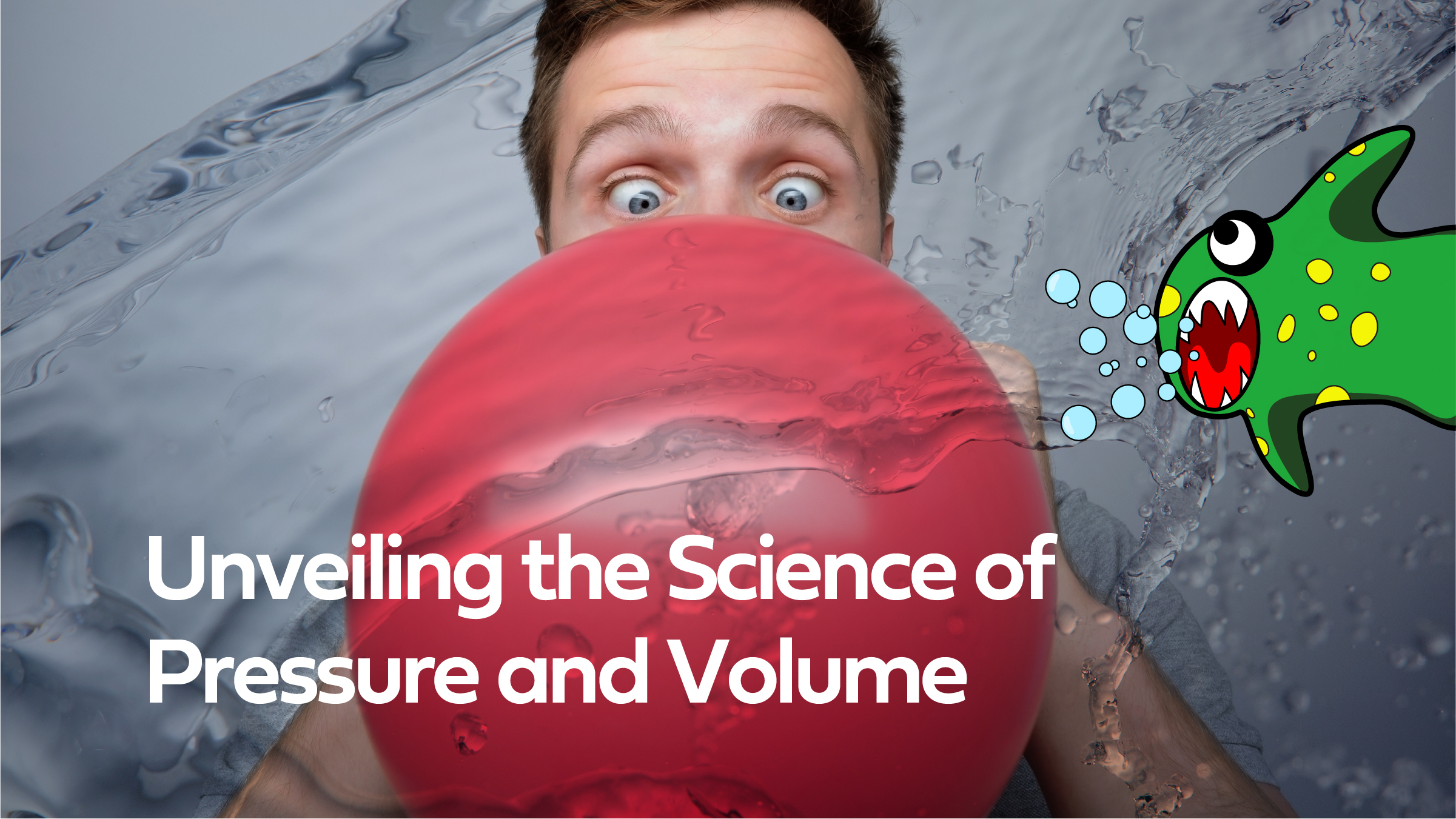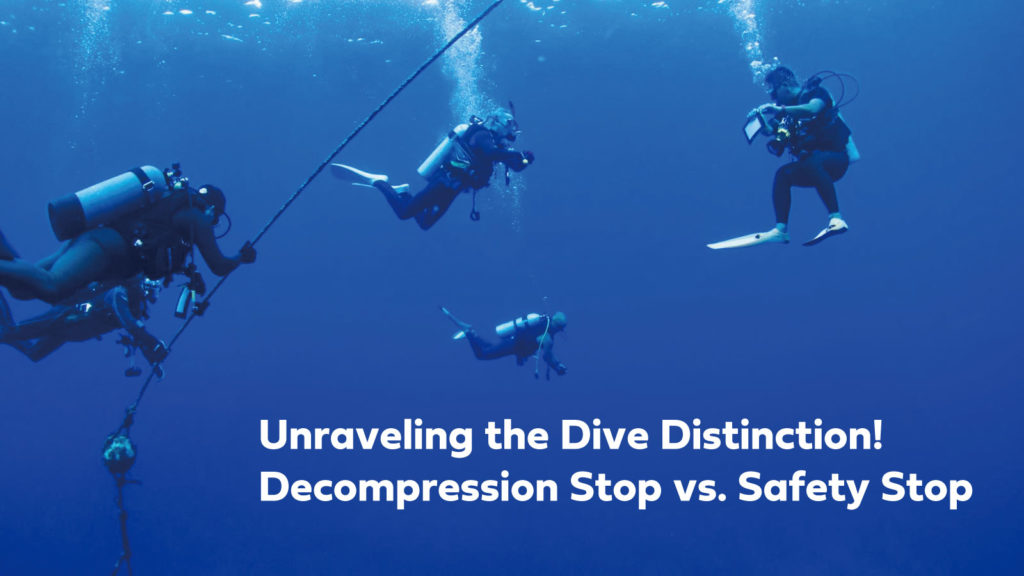
First, let me ask you a quick question:
「Does Recreational Scuba Diving include decompression stops?」
Well, the correct answer is actually mostly “No.”
However, your class may have included the practice of a Safety Stop.
This Safety Stop is a simulated decompression stop at approximately 15 feet (5m) for 2 to 3 minutes and is not required but recommended for additional safety purposes to reduce the risk of DCS.
In this article, we will clarify the difference between decompression stops and safety stops. These are two similar-sounding practices that hold different meanings!
Before we begin, let’s clarify something straight away:
Decompression stops are not part of a recreational diving!
Now, let’s delve into the details and clear up any uncertainties!
Understanding Recreational Diving Basics
To explain the difference between decompression stops and safety stops, let’s look at recreational diving.
While there may be various definitions, let’s keep it simple with the following points:
- Recreational diving certifications start at 40 feet depth (12m) , 60 feet (18m), (98 feet (30m), and 132 feet (40m), depending on certification Level.
- The ability to ascend directly to the water surface (subject to interpretations).
- Non-decompression diving.
Conversely, anything outside these parameters is generally categorized as technical diving.
Now, the first two points are quite understandable, aren’t they?
The third point, “non-decompression diving,” might sound a bit complex though.
For now, let’s simplify:
Recreational divers plan their dives in a way that allows them to go up to the surface whenever they want if they ascend slowly. This helps them stay within a safe range where they shouldn’t get decompression sickness.
They try to avoid needing decompression stops, which are necessary to let the nitrogen in their bodies off-gas safely.
Exploring Decompression Stops

We learned that non-decompression diving ensures that we stay within safe limits to avoid decompression sickness. Thus, decompression diving involves ascending in stages. It follows specific depth and time guidelines derived from decompression theory.
For instance, after spending 20 minutes at a depth of 140 feet (40m), we might make a first stop at 30 feet (10m) for 10 minutes. We will then make a stop at 10 feet (3m) for 15 minutes before surfacing. (The numbers provided here are for illustration purposes only).
These stops at certain depths and durations are known as decompression stops. Failing to perform these stops when required can increase the risk of decompression sickness!
We mentioned earlier that decompression stops are not employed in regular recreational diving. This is because decompression stops are techniques used in technical diving and require additional special training by a Technical Diving Instructor.
Yet, this doesn’t mean that recreational divers are entirely exempt from the concept. You were taught ways to prevent decompression sickness when you learned how to use dive tables or dive computers for non-decompression dives.
If you’ve forgotten those crucial lessons, you can review them here:
For dive computers, staying within the no-decompression limits ensures you won’t trigger the decompression mode (DECO).
But what if you exceed the recommended limits provided by dive tables or dive computers?
The general idea and best-suggested approach would be to ascend. while not exceeding 30′ (10m) ascent rate. Not exceeding the Ascent rate is even more critical now! Most Dive computers will sound an alarm if ascending too fast.
While ascending, not exceeding 30′ (10m) a minute, performing a decompression stop can help reduce the risk of decompression sickness.
This also means that exceeding the limits doesn’t guarantee an instant risk of decompression sickness. By correctly executing a decompression stop before ascending, you can still prevent it.
You may remember every detail from your diving training. Yet, it’s essential to recall that dive tables often have instructions for a simple decompression stop. This is needed when you exceed the no-decompression limit by just a few minutes. In the same way, when DECO is indicated, dive computers will show a decompression stop time and depth.
However, this doesn’t mean you can rely on reaching decompression limits! Keep in mind that it’s just a simple decompression stop, and it’s more about reducing the risk of decompression sickness rather than preventing it completely.
DECO: A Big No-No!
A decompression stop involves making specific depth and time stops to allow nitrogen to off-gas from your body. It should reduce the risk of decompression sickness when ascending to the water surface after a dive.
- For recreational diving, decompression stops are generally avoided as a standard practice.
- In the event of surpassing the no-decompression limits, decompression stop(s) can be performed. Avoid making this a practice!!
Now, let’s shed light on the safety stop.
What is a safety stop?
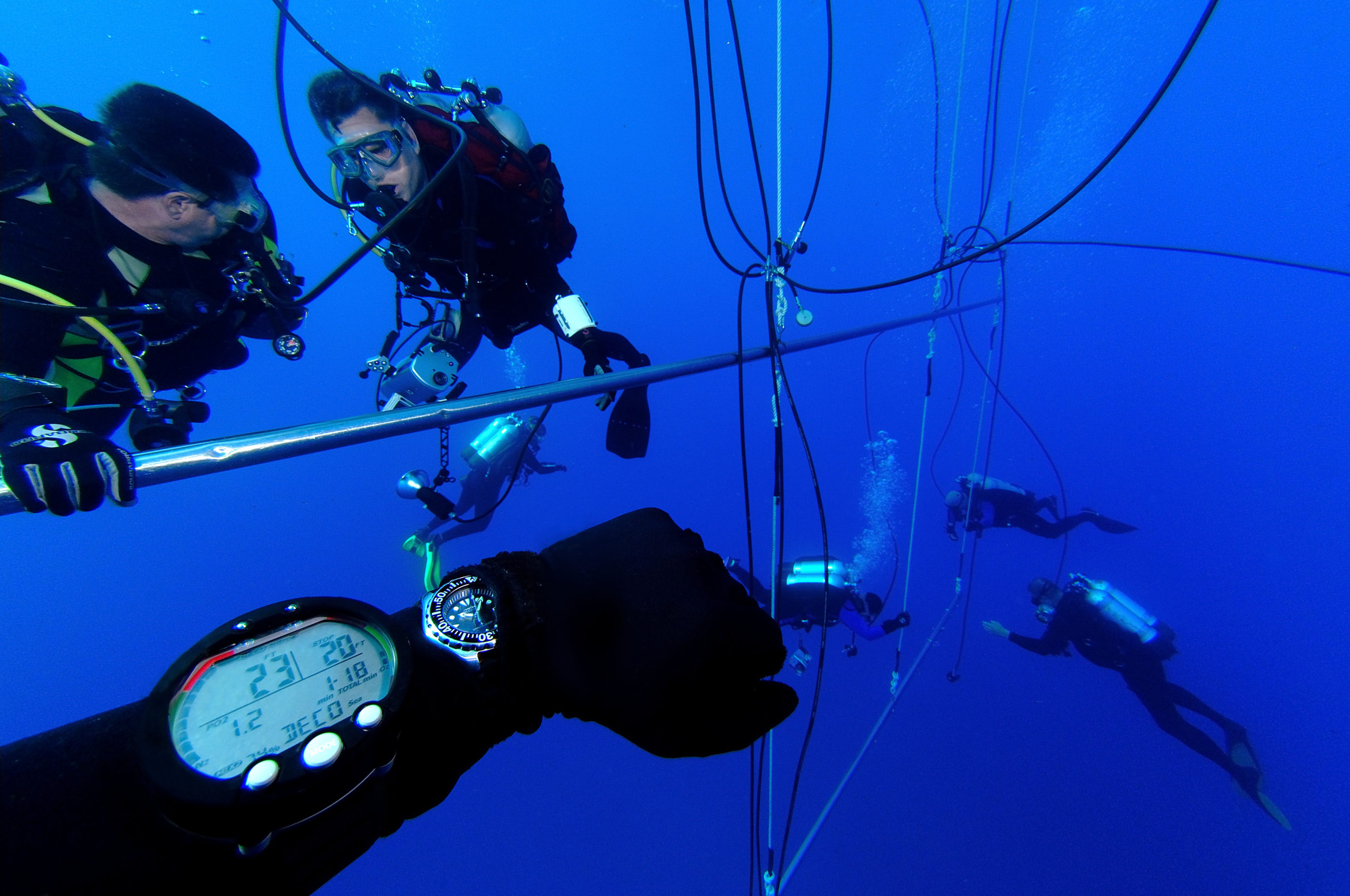
As mentioned earlier, the safety stop is a 3-minute stop at a depth of 15 feet (5m) before concluding a dive.
So, what sets a decompression stop apart from a safety stop?
Here’s the breakdown:
- Decompression Stop:
If not performed, there is a theoretical risk of developing decompression sickness. - Safety Stop:
Even if not performed, there is a theoretical assurance that decompression sickness should not occur.
Throughout the explanation of decompression stops, I’ve emphasized the term “theoretically.” This emphasis is deliberate.
Recreational diving is meant to prevent decompression sickness in theory, but some people may still experience it on rare occasions. Various factors, including individual physiology and dive-specific factors including fast ascents, can contribute to this occurrence.
Some divers may have a physical condition known as PFO, Patent Foramen Oval, a hole between the upper chambers of the heart. Although some people live a long healthy life with this condition, it may increase the risk of DCS. It can be corrected with surgery.
Moreover, decompression theory, being somewhat hypothetical, is not without its imperfections, which further justifies the use of the term “theoretically.”
There, we can now clarify the definition of recreational diving as follows:
“Recreational diving is done within a safe depth range to avoid decompression sickness. In theory, the risk is minimized if you ascend slowly, no faster than 30′ (10m) a minute.”
Yet, all diving training materials and guidelines tell divers to always do a safety stop, even if it’s not required for their specific dive.
But hold on… Doesn’t that appear somewhat contradictory?
This is where the confusion between decompression stops, and safety stops arises!
Allow me to explain this way:
- A safety stop reduces the risk of decompression sickness by pausing at 17 feet for 3 minutes.
- Whenever possible, we should perform a safety stop before concluding any dive.
- But it’s not an absolute requirement. Divers may choose to forgo the safety stop if other factors such as strong currents or poor visibility pose more significant risks.
This extra step is recommended because safety stops have been shown to lower potential risks of DCS. Even though the chances of decompression sickness are low.
The Underlying Reason for Safety Stops
Let’s explore this topic further.
Why did the concept of a safety stop emerge in recreational diving? Especially when divers are theoretically free to ascend to the water surface at any time within the No Decompression Limits.
As mentioned earlier, incidents of decompression sickness during non-decompression dives are uncommon.
While we cannot verify historical events, the diving community provided the following explanation:
“There is a possibility of experiencing decompression sickness during non-decompression dives. It is because people’s bodies are different and diving details vary. Plus, our understanding of decompression theory is evolving.”
To solve this concern, diving organizations took inspiration from technical diving decompression stops. They decided to introduce the idea of a safety stop.
In technical diving, decompression stops occur at various depths, with the final stop at 10 feet (3m).
The idea was to incorporate at least the final decompression stop to help reduce the risk of decompression sickness.
However, you might be wondering why the safety stop happens at 17 feet (5m).
One reason is that buoyancy control becomes more challenging as the depth decreases.
There are bigger pressure changes at shallower depths, making it harder to stay buoyant. We will get on this subject in a different article!
Thus, you can sum up the decision-making process pretty much like this:
- We are still witnessing cases of decompression sickness during non-decompression dives.
- Can we adopt some elements of technical diving’s decompression stops to mitigate the risk?
- Performing the final stop at 10 feet (3m) might be challenging.
- Let’s set it at approximately 17 feet (5m). That should work! Remember to slowly ascent the last 17′ to the surface after your safety stop!
So, the idea of a safety stop was created without strict rules, allowing some flexibility in how it’s used.
One might wonder if it effectively prevents decompression sickness.
There is only limited research on its effectiveness. A definitive conclusion remains elusive even today.
However, studies have shown that doing a safety stop leads to fewer gas bubbles inside the body after surfacing. Which is a good sign of possible benefits. It’s safe to say that the safety stop offers some advantages, though not definitive.
Some of you may ponder the relationship between gas bubbles inside the body and decompression sickness…
It is a correct assumption. However, the topic can become more intricate. It will involve silent bubbles, microbubbles, bubble theory, and other complex aspects. We will discuss it on another occasion.
Concluding Remarks on Safety Stops
Safety stops are often emphasized as an essential practice. offering potential benefits without significant drawbacks.
However, it’s worth noting that while they are often recommended, they are not mandatory. Divers can decide whether to do a safety stop based on their judgment, considering things like currents or visibility. Sometimes a big Ocean Swell will make it difficult to maintain buoyancy at your safety stop or if the Anchor line goes up and down more the 3′ (1m)
If you’ve read this far, you might be questioning, “Is it acceptable to skip the safety stop?”
Even though the stop is only three minutes at 17 feet (5m) deep, you can keep exploring shallower areas. They may show you amazing hidden treasures!
While there’s no absolute certainty of the dramatic effectiveness of safety stops, they also do not present any clear disadvantages.
Thus, let’s make it a routine to incorporate safety stops into our dives!

